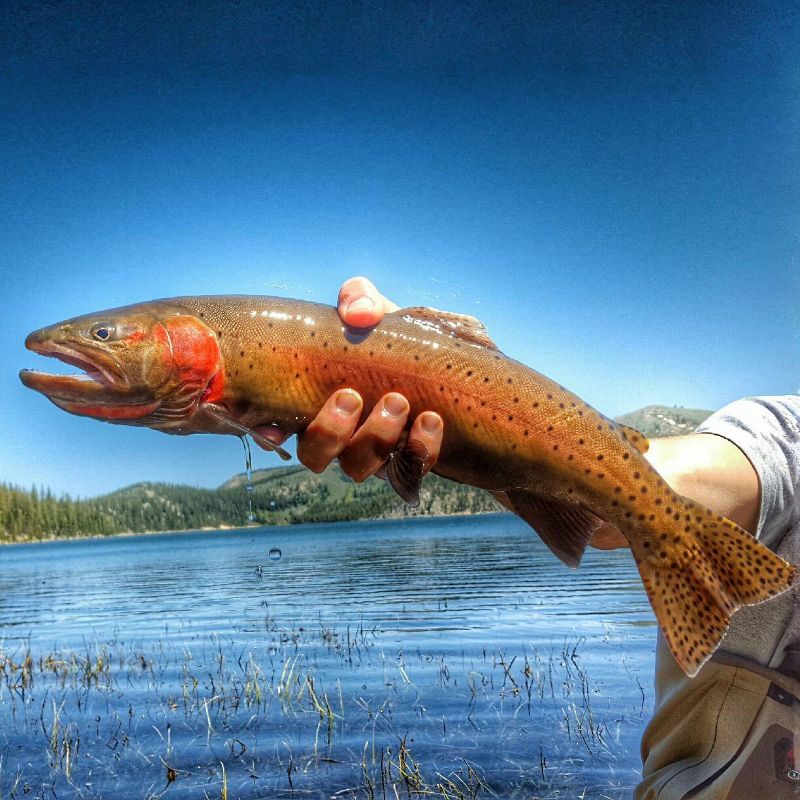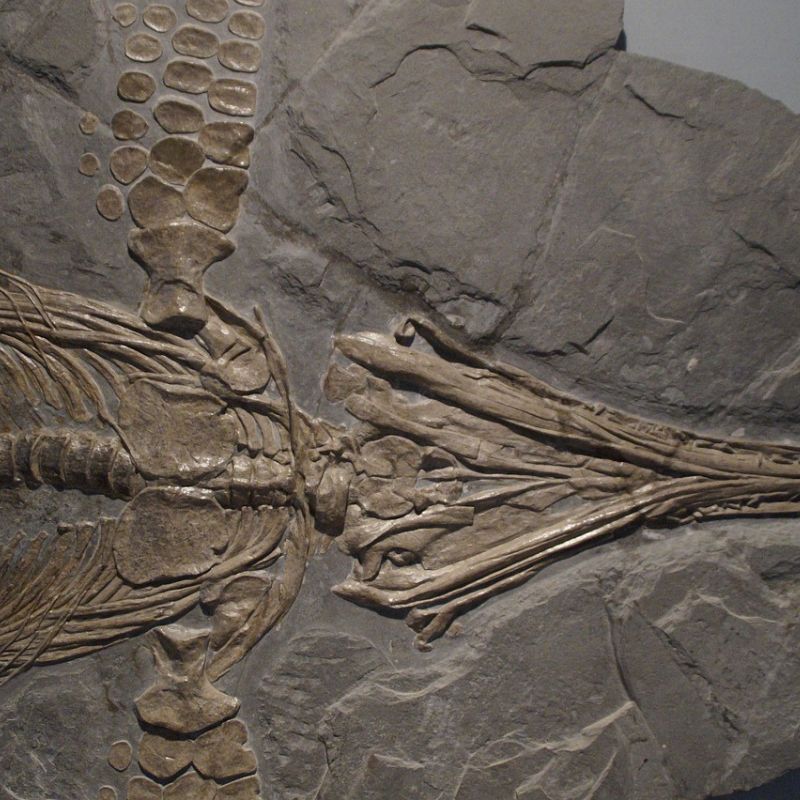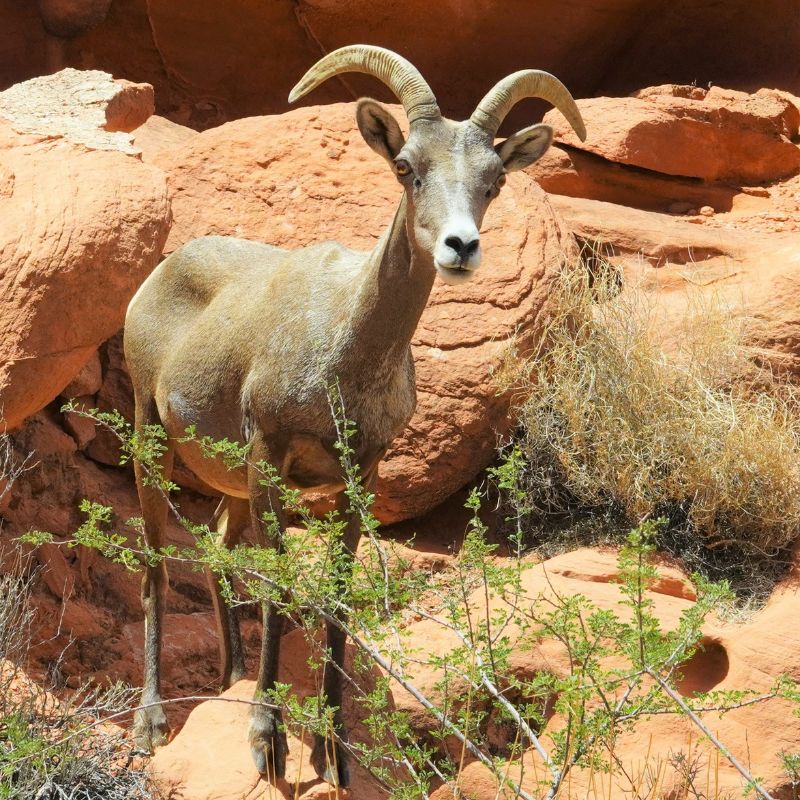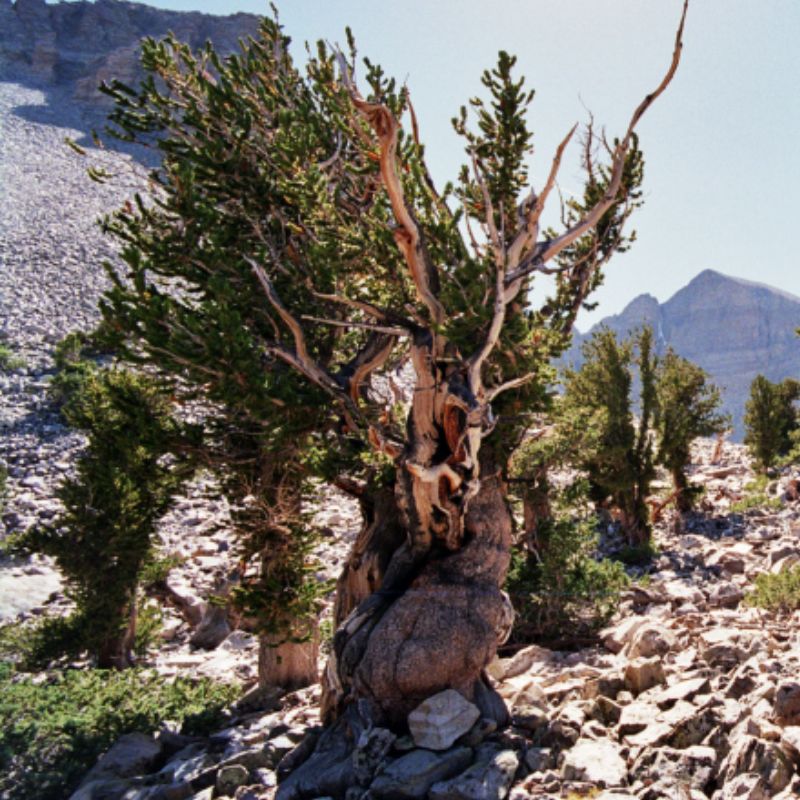Explore the Fascinating History of Nevada
Take our Nevada Trivia Quizzes for a Chance to Win a 6-Month Subscription to History By Mail!

The History of Nevada
Journey Through Nevada Trivia
Welcome to our Nevada history and trivia page, presented by History By Mail. Join us as we embark on a journey through the captivating past and cultural tapestry of the Silver State. From Native American civilizations to the arrival of European explorers and the modern era, we'll delve into Nevada's hidden treasures and test your knowledge with engaging quizzes. Let's uncover the rich history and intriguing trivia of Nevada together.
Nevada, known as the Silver State, is a land of remarkable history and diverse landscapes. From the ancient Native American tribes like the Paiute, Shoshone, and Washoe who first inhabited the region, to the impact of European exploration and the quest for riches during the Comstock Lode era, Nevada holds a captivating legacy. From the dazzling lights of Las Vegas to the vast deserts of the Great Basin and the stunning beauty of Lake Tahoe, the state showcases a fusion of cultures, natural wonders, and a deep connection to its Native American and mining roots.
Join us as we unravel the fascinating history and trivia of Nevada, exploring its role in the Wild West, its contributions to the mining industry, and the intriguing stories that have shaped it into a unique and cherished part of American history.
Facts about Nevada
State Abbreviation: NV
Capital: Carson City
Name Origin: Nevada’s name comes from the Spanish word nieve, which roughly means “snow-capped.” The state’s name refers to the Sierra Nevada mountain range.
Nickname: Sagebrush State; Silver State; Battle Born State
Statehood: October 31, 1864 (36th State)
State Motto: All for Our Country
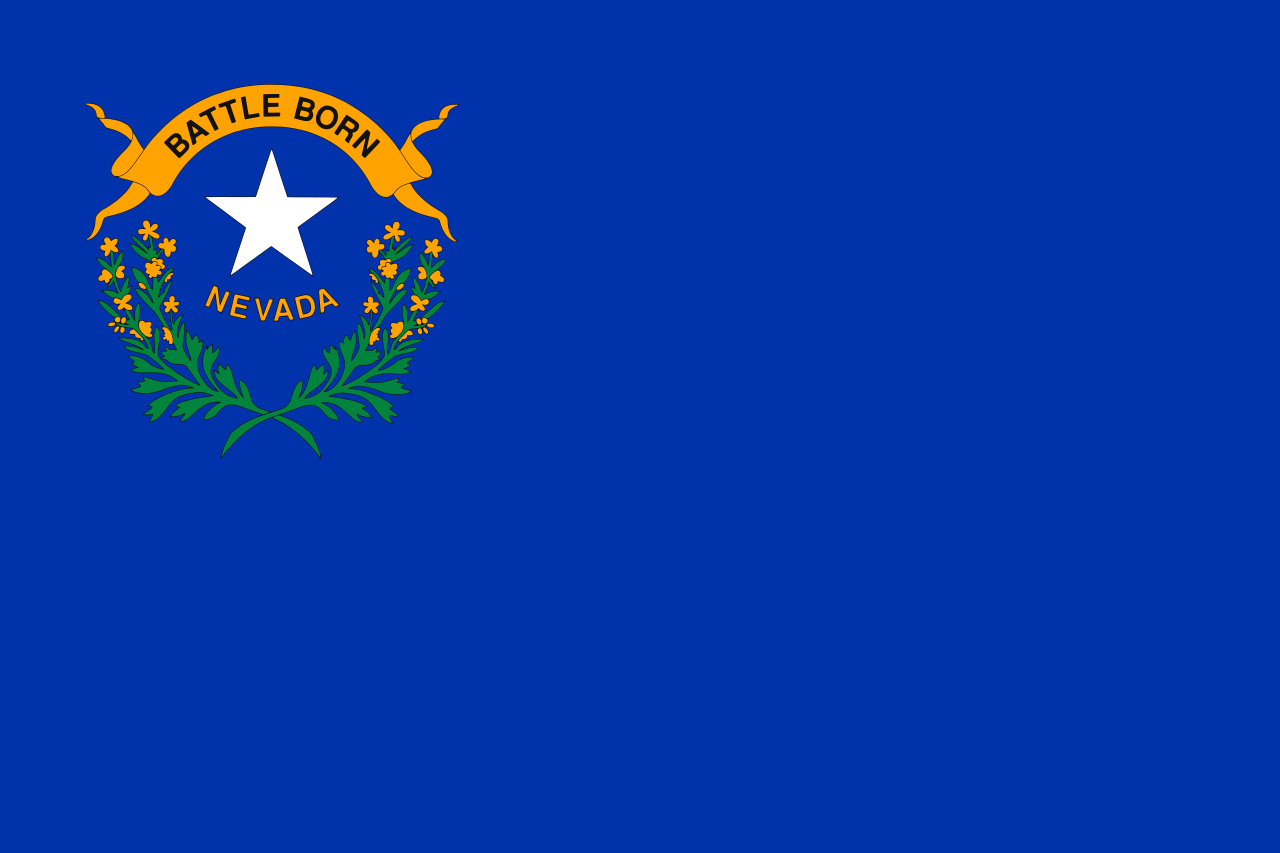
Nevada's Flag
The State Flag of Nevada is a vibrant and distinctive emblem that embodies the spirit and history of the Silver State. The flag consists of a deep blue field with a stylized representation of Nevada's official state emblem, the silver star, in the upper left corner. Encircling the star is a wreath composed of sagebrush, Nevada's state flower, symbolizing the state's natural beauty and resilience.
The silver star on the flag pays homage to Nevada's nickname, "The Silver State," which references its rich history of silver mining and the significant role it played during the Comstock Lode era. The star shines brightly against the blue background, representing the clear skies and wide-open spaces that characterize Nevada's landscape.
The flag's design was created by Louis Shellback, a Nevada native, in 1926. It was officially adopted as the state flag on March 26, 1929, and has remained a symbol of pride and identity for the people of Nevada ever since.
Nevada's Great Seal
On February 24, 1866, the significant seal was officially embraced. A revised edition was employed on a state flag from 1915, a design scarcely replicated due to the intricate nature of the seal, which incurred substantial manufacturing costs. The seal's representations of agriculture and industry encompass a plow, a mill, a mine entrance, and a locomotive, bordered by two clusters of mountains. Beneath this depiction lies the state's motto: "All For Our Country."
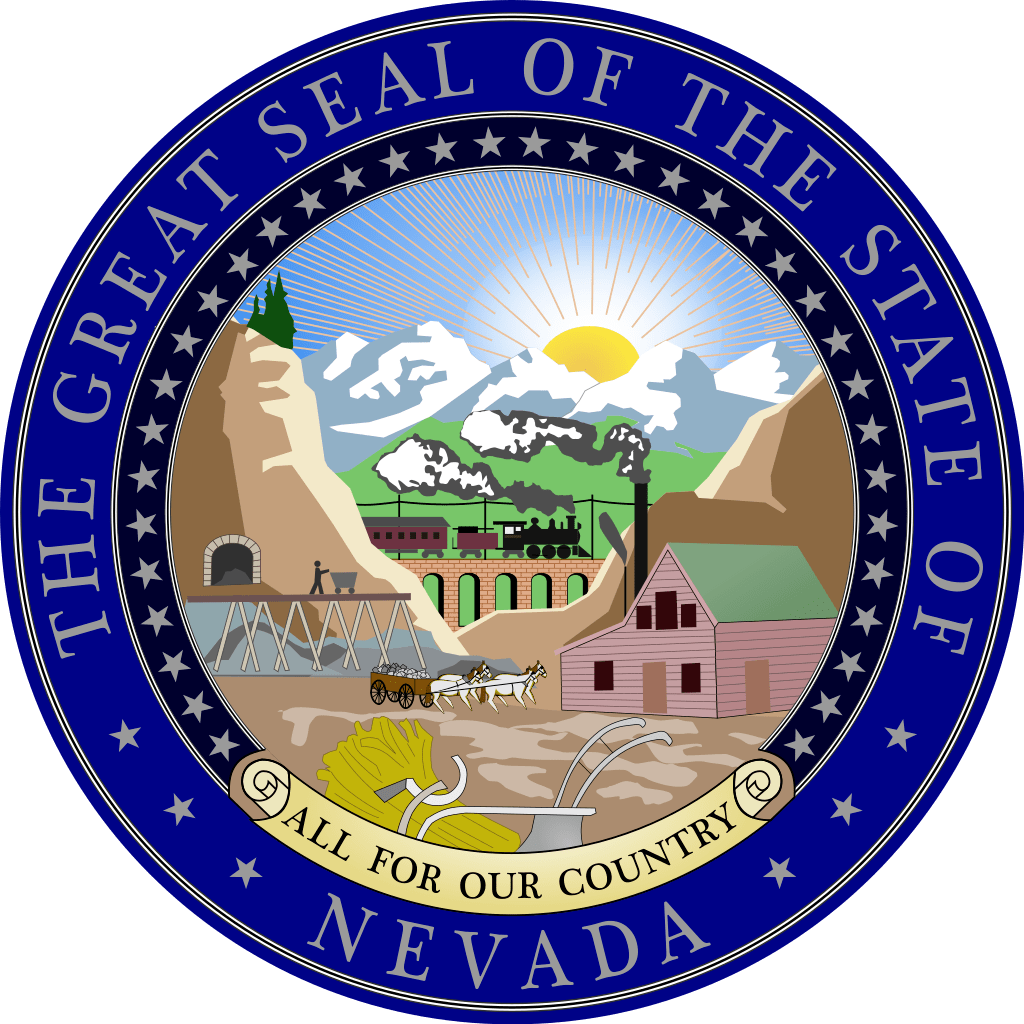
--- State Trivia #1 ---
History of Nevada
Trappers and explorers, such as Jedediah Smith and Peter Skene Ogden, ventured into the Nevada region during the 1820s. In the years 1843 to 1845, John C. Frémont and Kit Carson embarked on expeditions to explore the Great Basin and Sierra Nevada. The United States acquired the area in 1848 after the Mexican War, and the first permanent settlement emerged as a Mormon trading post near present-day Genoa.
Known as the driest state in the nation, Nevada experiences an average annual rainfall of approximately 7 inches. Much of the state comprises uninhabited, sagebrush-covered desert. The wettest region receives around 40 inches of precipitation per year, while the driest spot sees less than 4 inches annually.
Nevada gained fame through the discovery of the Comstock Lode in 1859, the richest silver deposit known in the United States. Its mines have yielded significant quantities of gold, silver, copper, lead, zinc, mercury, barite, and tungsten. Oil was discovered in 1954, but gold now surpasses all other minerals in terms of production value.
In 1931, Nevada legalized two industries that shaped its identity: divorce and gambling. Reno and Las Vegas were long regarded as the "divorce capitals of the nation." While liberalized divorce laws in other states have diminished this distinction, Nevada remains the gambling capital of the United States and a prominent entertainment hub. In 2009, gambling contributed 12.5% of Nevada's general revenue, amounting to $830 million. Despite not having a state lottery, Nevada ranks 12th in total gambling revenue.
Cattle and calves form the state's leading agricultural industry, while agricultural crops primarily include hay, alfalfa seed, barley, wheat, and potatoes.
Nevada's manufacturing sector encompasses gaming equipment, lawn and garden irrigation devices, titanium products, seismic and machinery monitoring devices, and specialty printing.
Major resorts in the state include Lake Tahoe, Reno, and Las Vegas. Popular recreational areas comprise Pyramid Lake, Lake Tahoe, Lake Mead, and Lake Mohave, all of which fall within the boundaries of the Lake Mead National Recreation Area. Other notable attractions in Nevada include Hoover Dam, Virginia City, and Great Basin National Park, which encompasses the awe-inspiring Lehman Caves.
State Symbols
Fun Facts
- Famous folks from Nevada include tennis pro Andre Agassi and Patricia Ryan Nixon, former first lady of the United States.
- Hidden Cave, discovered in the 1920s, was filled with thousands of artifacts such as arrowheads and other tools that ancient peoples may have stored there for safekeeping.
- Las Vegas is the state’s largest city, and it gets more than 42 million visitors a year. Here tourists can find the Stratosphere, the tallest freestanding observation tower in the United States. It’s over a thousand feet tall, and brave visitors can bungee jump off it!
- So many people claim to have seen extraterrestrials along the 98-mile (158-km) stretch of State Route 375 that the state transportation board named it Extraterrestrial Highway in 1996.
--- State Trivia #2 ---

Things To Do in Nevada
- Explore the Las Vegas Strip: Las Vegas is renowned for its vibrant entertainment, dazzling lights, and world-class resorts. Take a stroll along the famous Las Vegas Strip, visit iconic hotels and casinos, catch a mesmerizing live show, or try your luck at the many renowned casinos. The Strip offers a unique and unforgettable experience.
- Discover the Beauty of Lake Tahoe: Located on the Nevada-California border, Lake Tahoe is a stunning alpine lake surrounded by breathtaking mountain scenery. Enjoy a variety of outdoor activities such as hiking, skiing, snowboarding, boating, or simply relax on the beach and take in the serene surroundings. Lake Tahoe is a year-round destination with something for everyone.
- Experience the Extravaganza of Burning Man: Held annually in Nevada's Black Rock Desert, Burning Man is a one-of-a-kind festival celebrating art, self-expression, and community. Join thousands of participants from around the world as they create a temporary city filled with art installations, performances, and unique experiences. Burning Man is a transformative event that fosters creativity and individuality.
- Visit the Hoover Dam: Located on the border of Nevada and Arizona, the Hoover Dam is an engineering marvel that provides hydroelectric power and water to the surrounding areas. Take a guided tour to explore the inner workings of the dam, learn about its history, and marvel at the impressive architecture. The Hoover Dam offers breathtaking views of the surrounding Colorado River and Lake Mead.
- Experience the Natural Wonders of Valley of Fire State Park: Nevada is home to stunning natural landscapes, and Valley of Fire State Park is a testament to its beauty. Explore vibrant red sandstone formations, ancient petroglyphs, and scenic trails that wind through the park. Enjoy camping, hiking, picnicking, and photography as you immerse yourself in the unique desert environment.
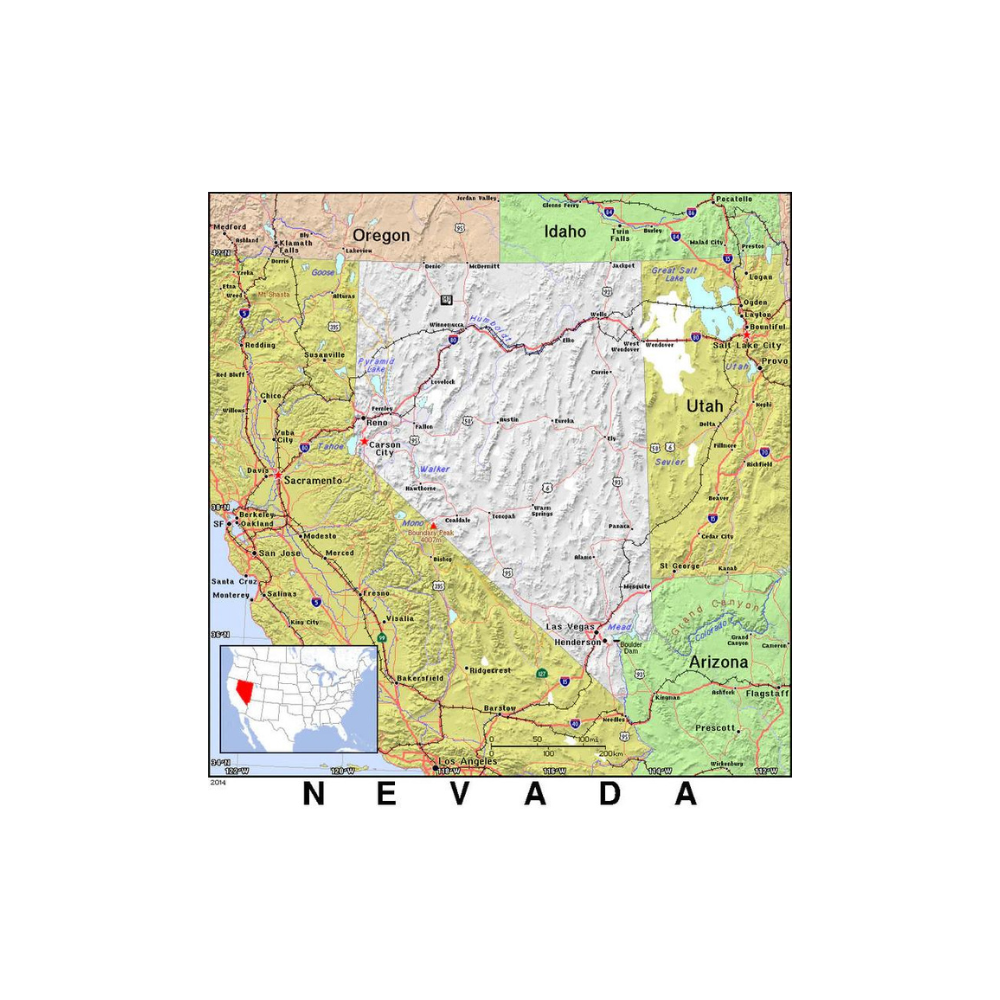
General Map of Nevada
Nevada, known as the "Silver State," is a captivating destination located in the western region of the United States. Renowned for its unique attractions, diverse landscapes, and world-famous entertainment, Nevada offers a wealth of experiences for visitors to indulge in.
Famous People From Nevada
--- State Trivia #3 ---
FREQUENTLY ASKED QUESTIONS (FAQ) ABOUT NEVADA
Nevada's name comes from the Spanish word "nevada," which means "snow-covered" or "snowy." This name was given to the region by Spanish explorers due to the snowy Sierra Nevada mountain range that spans the western part of the state.
Nevada officially became the 36th state of the United States on October 31, 1864, during the Civil War. One of the intriguing aspects of its statehood is that it was fast-tracked due to its mineral wealth, particularly silver, which was crucial for financing the Union's efforts in the war.
Las Vegas, often called the "Entertainment Capital of the World," started as a small stopover on the pioneer trails. It gained momentum with the construction of the Hoover Dam in the 1930s, attracting workers and tourists. However, it was the legalization of gambling in 1931 that set the stage for the development of the city's iconic casinos and entertainment industry.
Nevada is nicknamed the "Silver State" due to its rich silver deposits that played a vital role in its early development. The Comstock Lode, discovered in the mid-19th century, was one of the most significant silver deposits in history and contributed to the state's economy and growth. While gold has also been a significant resource, silver remains a prominent symbol of Nevada's mineral wealth.
Related Resources
- Official Website of the State of Nevada: The official website provides information about the state government, services, business resources, tourism, and more. Visit: https://nv.gov/
- Travel Nevada: Explore Nevada's attractions, outdoor activities, events, road trips, and plan your visit. Visit: https://travelnevada.com/
- Nevada State Parks: Discover Nevada's diverse state parks, hiking trails, camping sites, and recreational opportunities. Visit: http://parks.nv.gov/
- Nevada Department of Tourism and Cultural Affairs: Learn about Nevada's rich history, arts and culture, museums, and explore resources for travelers. Visit: https://travelnevada.biz/
- Nevada Historical Society: Delve into Nevada's history, research archives, and explore exhibitions and educational programs. Visit: https://www.nvhistoricalsociety.org/
- Nevada Division of Outdoor Recreation: Discover outdoor recreation opportunities in Nevada, including trails, parks, boating, fishing, and more. Visit: https://parks.nv.gov/outdoor-recreation/
- Nevada Arts Council: Learn about Nevada's vibrant arts scene, artists, grants, and cultural programs. Visit: https://nvculture.org/nevadaartscouncil/
- Las Vegas Convention and Visitors Authority: Explore attractions, entertainment, dining, and accommodations in Las Vegas, one of Nevada's major tourist destinations. Visit: https://www.lvcva.com/
- Reno-Sparks Convention and Visitors Authority: Discover what Reno and Sparks have to offer in terms of events, outdoor activities, dining, and entertainment. Visit: https://www.visitrenotahoe.com/
- Lake Tahoe Visitors Authority: Plan your visit to beautiful Lake Tahoe, a popular destination for outdoor recreation, skiing, and breathtaking views. Visit: https://tahoesouth.com/

